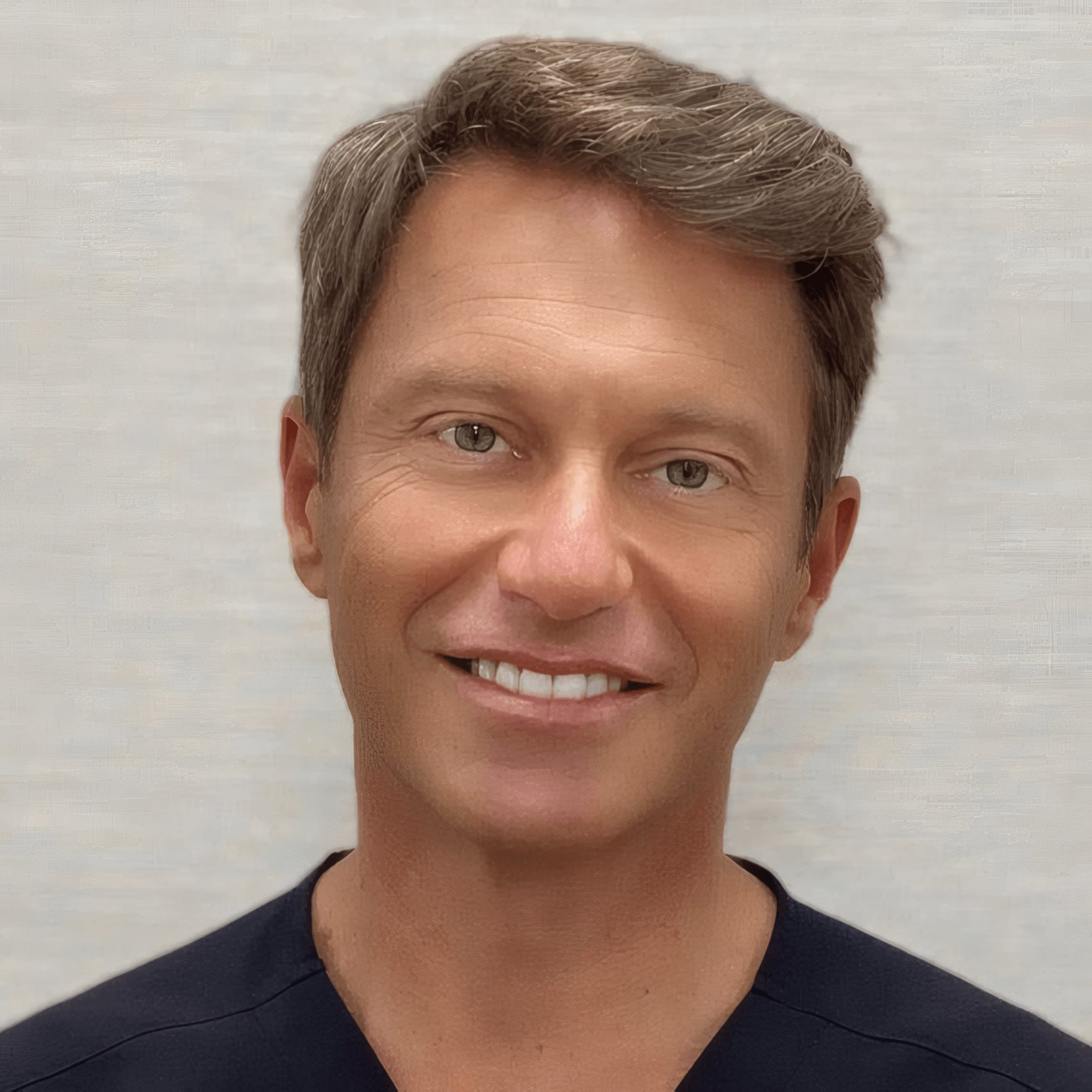The paradoxical sensation of nasal obstruction despite objectively open nasal passages. The distressing feeling that you can’t breathe properly even when your nose is clear. Chronic dryness, crusting, and an abnormal airflow sensation that significantly impacts your quality of life. These symptoms describe Empty Nose Syndrome (ENS)–a challenging condition that requires specialized understanding and treatment. Dr. Michael Cohen provides expert care for ENS patients throughout Long Island, offering comprehensive evaluation and innovative treatment approaches for this often misunderstood condition.
Same day booking and was assisted by a wonderful medical receptionist, Ross. Dr. Cohen really cares about his patients and takes his time. I will be back.

Specialized Care for a Complex Nasal Condition
Dr. Michael Cohen brings over 25 years of specialized experience in diagnosing and treating complex nasal conditions including Empty Nose Syndrome. As a board-certified otolaryngologist recognized as a Top Doctor by NY Top Docs for 25 consecutive years, he offers informed, compassionate care for ENS patients who often struggle to find appropriate treatment.
“Empty Nose Syndrome represents one of the most challenging nasal conditions to diagnose and manage,” explains Dr. Cohen. “Patients frequently describe symptoms that seem contradictory–feeling unable to breathe despite having objectively open nasal passages. This paradoxical sensation results from the loss of crucial nasal tissue and associated neural feedback mechanisms.” Dr. Cohen’s approach emphasizes comprehensive assessment, patient education, and personalized treatment plans that address both the physical and psychological dimensions of this condition.
Understanding Empty Nose Syndrome
Empty Nose Syndrome is a rare but serious condition that typically develops following extensive turbinate reduction surgery. The turbinates are vital structures within the nasal passages that humidify, warm, and filter inhaled air.
They also contain specialized nerve endings that provide crucial feedback about airflow sensation. When too much turbinate tissue is removed–particularly from the inferior or middle turbinates–the normal physiological function and sensory capacity of the nose can be significantly compromised.
Although the exact prevalence of ENS is unknown, studies suggest it occurs in approximately 2-3% of patients who undergo aggressive turbinate reduction procedures. The condition is now recognized as a legitimate medical entity by major otolaryngological organizations, though awareness and understanding among medical professionals continue to evolve.
ENS is characterized by several key physiological changes:
Altered Nasal Aerodynamics
The removal of turbinate tissue changes airflow patterns within the nasal cavity, creating a paradoxical sensation of emptiness while simultaneously feeling congested or obstructed.
Reduced Mucosal Surface Area
The significant decrease in tissue volume results in less surface area for critical moisture exchange and secretion production, leading to persistent dryness that resists standard treatments.
Diminished Sensory Function
Specialized nerve endings located in turbinate tissue are damaged or removed, disrupting normal airflow sensation and feedback mechanisms that regulate breathing perception.
Compromised Air Conditioning
The nose’s sophisticated ability to properly warm, cool, filter, and humidify inhaled air becomes significantly impaired, potentially causing irritation in both upper and lower airways.
These physiological alterations can lead to significant functional impairments and quality of life issues for affected individuals.
Recognizing the Symptoms of ENS
Patients with Empty Nose Syndrome commonly experience a distinct constellation of symptoms:
Paradoxical Nasal Obstruction
Despite objectively open nasal passages, patients feel unable to breathe adequately through their nose, often described as a sensation of “suffocation” or inability to detect airflow.
Chronic Nasal Dryness
Severe dryness of the nasal mucosa leads to crusting, bleeding, and discomfort that persists despite moisture-enhancing interventions.
Reduced Nasal Airflow Sensation
The inability to feel air passing through the nose creates anxiety and breathing distress, often compelling patients to breathe through their mouth.
Impaired Temperature Regulation
Difficulty warming inhaled air appropriately, resulting in discomfort with cold air and potential lower airway irritation.
Repeated Infections
Increased susceptibility to nasal and sinus infections due to compromised mucociliary clearance and impaired protective functions.
Sleep Disturbances
Significant disruption of sleep patterns due to breathing discomfort, often requiring specific sleeping positions or environmental modifications.
Psychological Impact
The chronic nature of symptoms frequently leads to anxiety, depression, and reduced quality of life that can be as debilitating as the physical symptoms.
Exercise Intolerance
Difficulty breathing during physical exertion, often limiting activity levels and overall fitness.
The severity of these symptoms varies among patients, but the overall impact on quality of life can be profound, affecting work performance, social interactions, and emotional well-being.
Therapeutic Approaches for Empty Nose Syndrome
Dr. Cohen employs a comprehensive and individualized approach to treating ENS:
Conservative Management Strategies
Initial treatment focuses on symptom management and mucosal health:
- Nasal Irrigation Protocols: Customized saline irrigation regimens using specific solutions and techniques to maintain mucosal moisture and reduce crusting.
- Humidification Therapy: Strategic use of environmental humidifiers, personal nasal humidifiers, and specialized moisture-retention techniques to optimize nasal hydration.
- Mucosal Moisturizers: Prescription and specially formulated nasal moisturizing agents, including gels, sprays, and ointments designed for prolonged moisture retention.
- Airflow Modification Devices: External nasal dilators or internal devices that alter airflow patterns to improve symptom perception in some patients.
- Medication Management: Targeted use of medications including certain topical anticholinergics, low-dose capsaicin preparations, or other agents that may improve sensory function.
Surgical Reconstruction Options
For patients with significant symptoms despite conservative management, surgical interventions may be considered:
- Submucosal Implantation: Placement of biocompatible materials beneath the nasal mucosa to recreate some of the physical bulk and airflow resistance of the turbinates.
- Turbinate Reconstruction: Advanced techniques to rebuild or augment remaining turbinate tissue using various implant materials or tissue grafts.
- Partial Septal Narrowing: Strategic modifications to the nasal septum to alter airflow dynamics and create more physiologic air currents.
- Mucosal Advancement Procedures: Techniques to reposition existing mucosa to cover exposed areas and increase surface moisture.
Surgical approaches are carefully individualized based on each patient’s specific anatomical changes, symptoms, and previous surgical history. Success rates vary, with approximately 60-70% of patients reporting meaningful improvement following appropriate surgical intervention.
Multidisciplinary Support for ENS Patients
Dr. Cohen recognizes that effective ENS management often requires a multidisciplinary approach:
Psychological Support
The chronic and sometimes debilitating nature of ENS can take a significant psychological toll. Dr. Cohen works collaboratively with mental health professionals who understand chronic medical conditions to provide:
- Strategies for coping with chronic symptoms
- Approaches to manage anxiety about breathing
- Techniques for improving sleep despite nasal discomfort
- Support for the emotional aspects of living with ENS
Environmental Modifications
Personalized recommendations for environmental adaptations that can significantly improve comfort:
- Indoor humidity optimization strategies
- Seasonal adaptation techniques
- Sleep environment modifications
- Workplace accommodation suggestions
Is Specialized ENS Treatment Right for You?
You may benefit from evaluation and treatment if you:
Have Undergone Turbinate Surgery
You previously had turbinate reduction procedures and subsequently developed nasal dryness, paradoxical congestion, or persistent breathing discomfort that affects daily life.
Experience Paradoxical Obstruction
You feel unable to breathe properly through your nose despite objectively open nasal passages, creating a distressing disconnect between physical anatomy and breathing sensation.
Struggle with Chronic Nasal Dryness
You have persistent mucosal dryness and crusting that doesn’t respond adequately to standard moisturizing approaches, requiring constant management without relief.
Feel Constant Nasal Discomfort
You experience ongoing sensations of nasal emptiness, airflow disruption, or breathing awareness that significantly affect your daily functioning and quality of life.
Notice Specific Symptom Patterns
Your symptoms predictably worsen in air-conditioned environments, during physical exercise, or in low-humidity conditions, suggesting the characteristic presentation of ENS.
Have Been Told u0022Nothing Is Wrongu0022
Previous medical evaluations found no physical explanation for your symptoms despite your significant discomfort, leading to frustration and lack of appropriate treatment.
Show Post-Surgical Changes
Endoscopic examination reveals significant absence of normal turbinate tissue or altered nasal anatomy following previous surgeries, confirming physical changes consistent with ENS.
Dr. Cohen offers comprehensive evaluations for patients with suspected ENS, providing both validation of symptoms and realistic discussion of management options.
Innovative Surgical Approaches for ENS
For patients who are appropriate surgical candidates, Dr. Cohen offers several advanced reconstructive options:
Implant-Based Reconstruction
This technique involves the strategic placement of biocompatible materials to recreate the physical presence and function of turbinate tissue:
The procedure begins with careful preparation of the implant site, typically in the area of the previously reduced inferior turbinate. Dr. Cohen creates a precise submucosal pocket while preserving the delicate remaining nasal lining.
Various implant materials may be considered, including:
- Acellular dermal matrices that provide structure while allowing tissue integration
- Hyaluronic acid-based fillers for smaller augmentations
- Autologous cartilage grafts harvested from septal or auricular sources
- Specialized medical-grade implant materials designed specifically for nasal reconstruction
The implant is precisely shaped and positioned to recreate natural airflow resistance and sensation while avoiding excessive bulking that could cause actual obstruction. The mucosa is then meticulously repositioned over the implant and secured to ensure proper healing.
This approach aims to restore some of the physical and sensory functions of the turbinates by recreating the tissue bulk, altering airflow patterns, and potentially providing a substrate for improved sensory function.
Cotton Test Evaluation
Before proceeding with permanent implants, Dr. Cohen often performs a “cotton test” during consultation:
Small, moistened cotton pledgets are temporarily placed in strategic locations within the nasal cavity to simulate the effect of potential implants. Patients then evaluate whether this temporary modification improves their breathing sensation and comfort.
This diagnostic procedure helps predict the likelihood of success with permanent implantation and guides the location and extent of reconstruction needed. Studies indicate that positive cotton test results correlate with approximately 70-80% satisfaction rates following permanent implantation procedures.
Recovery After ENS Reconstruction
The recovery process following ENS reconstruction procedures follows a typical timeline:
Initial Healing Phase (1-2 Weeks)
The immediate post-procedure period focuses on protecting the surgical site and managing discomfort:
- Nasal saline irrigations may be temporarily modified or postponed
- Specific antibiotics and topical medications are prescribed to prevent infection and promote healing
- Activity restrictions minimize the risk of bleeding or implant displacement
- Regular follow-up ensures proper early healing
Adaptation Period (2-12 Weeks)
During this critical phase, patients begin to adapt to the changes in their nasal anatomy:
- Gradual resumption of normal nasal irrigation routines
- Specialized moisturizing protocols to support the healing mucosa
- Potential temporary fluctuations in symptoms as tissues adjust
- Progressive improvement in comfort and function for most patients
Long-Term Results (3-6 Months)
The full benefits of reconstruction typically develop over several months:
- Stabilization of the implant or graft material
- Integration with surrounding tissues
- Adaptation of sensory processing to the modified anatomy
- Ongoing refinement of moisture maintenance strategies
Approximately 60-70% of appropriately selected patients report meaningful improvement in their ENS symptoms following reconstruction, though results vary based on the severity of the original tissue loss, the specific symptoms, and individual healing factors.

Frequently Asked Questions About Empty Nose Syndrome
ENS diagnosis is based on a combination of factors: prior turbinate surgery, characteristic symptoms (especially paradoxical obstruction), endoscopic findings showing turbinate reduction, positive response to the cotton test, and exclusion of other causes for symptoms. There is no single definitive test, making experienced clinical evaluation crucial.
Yes, while some patients notice symptoms immediately after surgery, others develop ENS months or even years later as tissue changes progress and compensatory mechanisms fail.
No, although ENS can have significant psychological impacts, the condition has clear physiological mechanisms related to altered nasal aerodynamics, reduced surface area for humidification, and impaired sensory function. Modern research has validated its physical basis.
Conservative measures provide meaningful relief for approximately 30-40% of patients. For appropriate surgical candidates, success rates of 60-70% (defined as significant symptom improvement) are reported following implant-based reconstruction in specialized centers.
ENS typically does not resolve spontaneously once established, as it results from permanent structural changes to the nasal anatomy. However, appropriate management can significantly improve symptoms and quality of life for many patients.
The longevity of implants depends on the material used. Autologous materials (like cartilage) tend to have excellent long-term stability. Acellular dermal matrices typically integrate into the surrounding tissue and provide long-lasting results. Some absorbable materials may require periodic reapplication.
Coverage varies significantly between insurance providers. Many will cover consultation and conservative management, but surgical reconstruction often requires detailed documentation and sometimes appeals. Our office staff works closely with patients to navigate these insurance challenges.

Why Choose Dr. Michael Cohen for ENS Treatment
Dr. Michael Cohen offers specialized expertise for patients with Empty Nose Syndrome:
- Extensive experience evaluating and treating this complex and often misunderstood condition
- Comprehensive understanding of nasal physiology and the mechanisms underlying ENS symptoms
- Balanced approach incorporating both conservative management and surgical options when appropriate
- Recognition that ENS symptoms are legitimate and deserve thorough attention
- Validation of patient experiences that may have been dismissed by other providers
- Realistic discussion of treatment expectations and outcomes
Patients particularly value Dr. Cohen’s willingness to listen to their ENS experiences and his commitment to finding personalized solutions for this challenging condition.
Expert ENS Care Available to Suffolk and Nassau Residents
If you’re struggling with symptoms of Empty Nose Syndrome, specialized care is available close to home. Dr. Cohen’s expertise in this complex condition offers hope for improved quality of life and symptom relief. With offices in both Syosset and Port Jefferson Station, comprehensive ENS evaluation and treatment is accessible to residents throughout Long Island.
Contact our office today to schedule your consultation and discuss your options for managing this challenging condition.